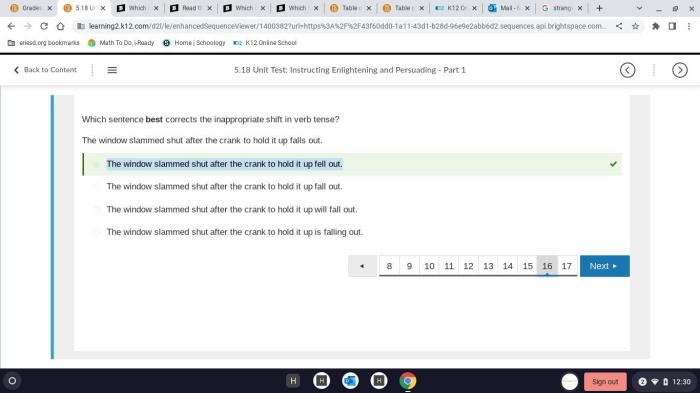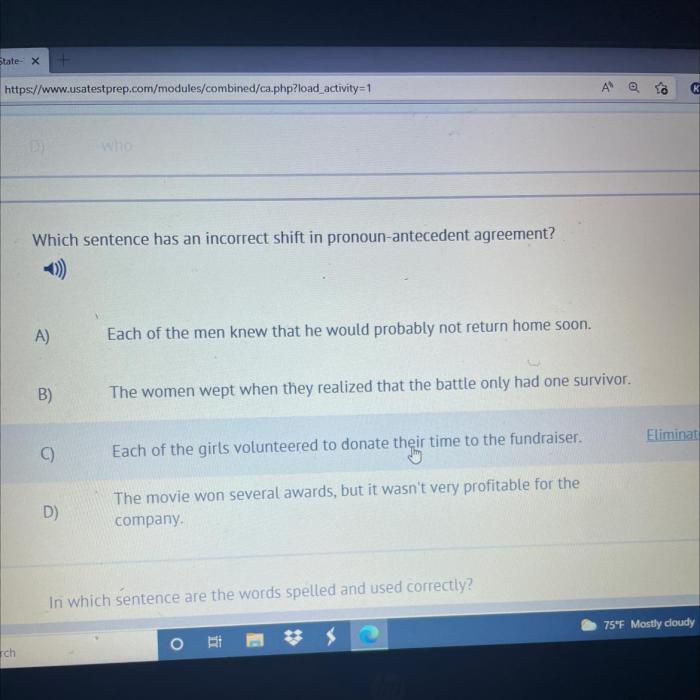Which sentence corrects the shift in agreement? This is a common question that arises when writing and editing. Agreement shifts occur when the subject and verb in a sentence do not agree in number or person. This can be a tricky error to spot, but it is important to correct it in order to maintain the clarity and coherence of your writing.
In this guide, we will discuss the different types of agreement shifts, how to identify them, and how to correct them. We will also provide some best practices for avoiding agreement shifts in your writing.
Agreement Shifts: Which Sentence Corrects The Shift In Agreement

An agreement shift occurs when the subject and verb in a sentence do not agree in number or person. This can be caused by a variety of factors, including:
- Changes in the subject’s number
- Changes in the subject’s person
- Changes in the verb’s tense
It is important to be able to identify and correct agreement shifts in order to write clear and concise sentences.
Identifying Agreement Shifts
There are a few different ways to identify agreement shifts. One way is to look for changes in the subject’s number. For example, if the subject is singular, the verb should be singular as well. If the subject is plural, the verb should be plural as well.
Another way to identify agreement shifts is to look for changes in the subject’s person. For example, if the subject is first person, the verb should be first person as well. If the subject is second person, the verb should be second person as well.
If the subject is third person, the verb should be third person as well.
Finally, you can also look for changes in the verb’s tense. For example, if the verb is in the present tense, the subject should be in the present tense as well. If the verb is in the past tense, the subject should be in the past tense as well.
If the verb is in the future tense, the subject should be in the future tense as well.
Correcting Agreement Shifts, Which sentence corrects the shift in agreement
There are a few different ways to correct agreement shifts. One way is to change the subject to match the verb. For example, if the subject is singular, the verb should be singular as well. If the subject is plural, the verb should be plural as well.
Another way to correct agreement shifts is to change the verb to match the subject. For example, if the subject is first person, the verb should be first person as well. If the subject is second person, the verb should be second person as well.
If the subject is third person, the verb should be third person as well.
Finally, you can also change the tense of the verb to match the subject. For example, if the subject is in the present tense, the verb should be in the present tense as well. If the subject is in the past tense, the verb should be in the past tense as well.
If the subject is in the future tense, the verb should be in the future tense as well.
General Inquiries
What is an agreement shift?
An agreement shift occurs when the subject and verb in a sentence do not agree in number or person.
How can I identify an agreement shift?
There are a few ways to identify an agreement shift. One way is to look for a mismatch between the number of the subject and the number of the verb. Another way is to look for a mismatch between the person of the subject and the person of the verb.
How can I correct an agreement shift?
There are a few ways to correct an agreement shift. One way is to change the number of the subject to match the number of the verb. Another way is to change the person of the subject to match the person of the verb.

